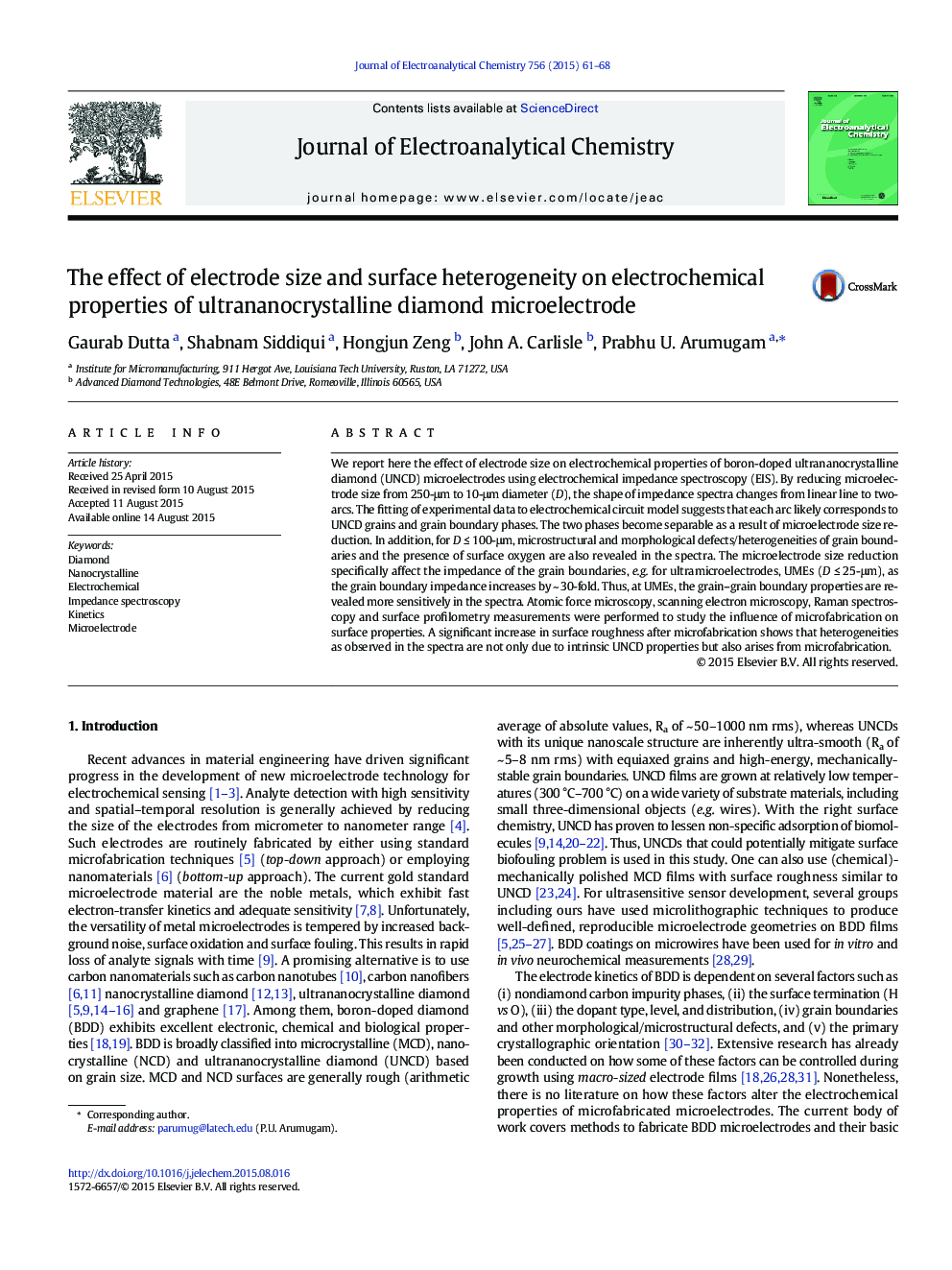| کد مقاله | کد نشریه | سال انتشار | مقاله انگلیسی | نسخه تمام متن |
|---|---|---|---|---|
| 218289 | 463191 | 2015 | 8 صفحه PDF | دانلود رایگان |
• Impedance spectra change from linear to two arcs at 10-μm UNCD microelectrode.
• The two-arcs represent the impedance of UNCD grain and grain boundary phases.
• Defects and surface oxygen are revealed at the spectra of ultramicroelectrodes, UMEs only.
• UMEs could be used as an investigative tool to study properties of UNCD phases.
• Grain boundary conductivity plays a critical role in UNCD UMEs.
We report here the effect of electrode size on electrochemical properties of boron-doped ultrananocrystalline diamond (UNCD) microelectrodes using electrochemical impedance spectroscopy (EIS). By reducing microelectrode size from 250-μm to 10-μm diameter (D), the shape of impedance spectra changes from linear line to two-arcs. The fitting of experimental data to electrochemical circuit model suggests that each arc likely corresponds to UNCD grains and grain boundary phases. The two phases become separable as a result of microelectrode size reduction. In addition, for D ≤ 100-μm, microstructural and morphological defects/heterogeneities of grain boundaries and the presence of surface oxygen are also revealed in the spectra. The microelectrode size reduction specifically affect the impedance of the grain boundaries, e.g. for ultramicroelectrodes, UMEs (D ≤ 25-μm), as the grain boundary impedance increases by ~ 30-fold. Thus, at UMEs, the grain–grain boundary properties are revealed more sensitively in the spectra. Atomic force microscopy, scanning electron microscopy, Raman spectroscopy and surface profilometry measurements were performed to study the influence of microfabrication on surface properties. A significant increase in surface roughness after microfabrication shows that heterogeneities as observed in the spectra are not only due to intrinsic UNCD properties but also arises from microfabrication.
Figure optionsDownload as PowerPoint slide
Journal: Journal of Electroanalytical Chemistry - Volume 756, 1 November 2015, Pages 61–68
